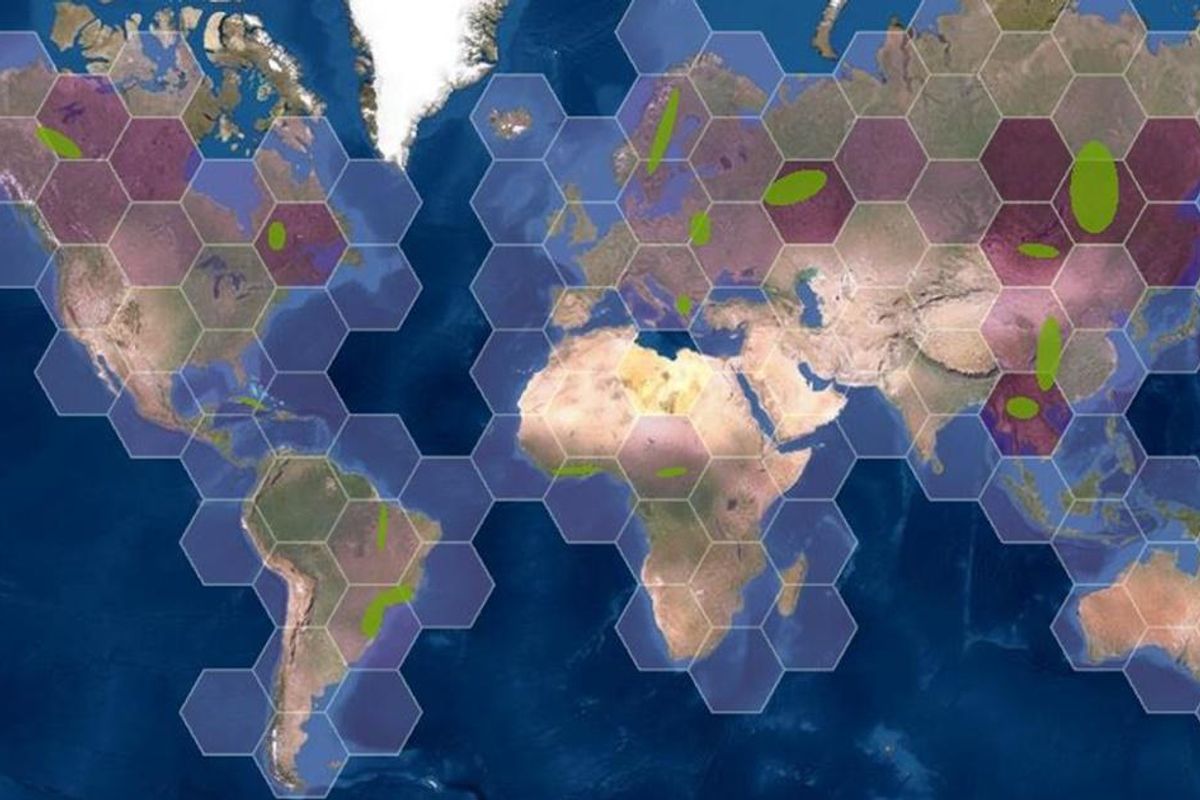
An encouraging study published by Trillion Trees shows that nearly 59 million hectares of forests — an area larger than mainland France — have regrown since 2000.
Trillion Trees is a joint venture between World Wildlife Fund (WWF), BirdLife International, and the Wildlife Conservation Society (WCS).
This newly-regenerated forest has the ability to store 5.9 gigatons of CO2, roughly the same amount of emissions generated by the U.S. every year.
Forests are a vital part of the fight against climate change. Trees work to lower the Earth's temperature through a process known as photosynthesis. A 2017 study found that forests and other ecosystems could provide over one-third of the reductions needed to keep global warming below 2 °C through to 2030.

One of the biggest success stories in forest regeneration is the Atlantic Forest in Brazil. An area roughly the size of the Netherlands has grown since the start of the new millennium. This was done through a wide variety of initiatives from planned projects to responsible industry practices.
Other places that have seen dramatic change are the boreal forests of northern Mongolia, central Africa, and the boreal forests of Canada.
"Deforestation is at the center of our climate crisis, and we must do everything we can to halt it," said Josefina Braña Varela, vice president and deputy lead for forests at WWF. "In addition, the restoration of our natural forests will play an essential role in preserving these critical ecosystems. The analysis provides a positive outlook for natural regeneration—but this growth doesn't happen without careful planning, increased investment, and strong policies in place that lead to an increase in forest cover."
The study also provides a road map for future reforestation projects which are sorely in need as the Earth's temperature rapidly rises.
"This map will be a valuable tool for conservationists, policymakers, and funders to better understand the multiple ways we can work to increase forest cover for the good of the planet," said John Lotspeich, executive director of Trillion Trees.
Lotspeich believes that we have little time to waste if we want to reach the goals set forth by the Paris Agreement.
"The data show the enormous potential of natural habitats to recover when given the chance to do so. But it isn't an excuse for any of us to wait around for it to happen," he said.

The news is definitely positive but there is still much work to do. Even though there has been substantial reforestation in some parts of the globe, the Earth is still losing an area about the size of the UK every year, largely due to the timber industry and agriculture.
"Deforestation still claims millions of hectares every year, vastly more than is regenerated," William Baldwin-Cantello of WWF said in a statement.
"To realize the potential of forests as a climate solution, we need support for regeneration in climate delivery plans and must tackle the drivers of deforestation, which in the UK means strong domestic laws to prevent our food causing deforestation overseas," he continued.
The good news is the study proves that reforestation can happen at a pretty rapid pace if we just leave mother nature alone and let her do her thing. If only we learned that lesson earlier.
- YouTubers of #TeamTrees Reach $20 Million Goal to Reforest the ... ›
- Border Collies are re-seeding Chile's burned forests after wildfires ›
- Three Dogs Are Rebuilding Chilean Forests Once Devastated By Fire ›





 Potted plants and herbs can thrive in a container garden.
Potted plants and herbs can thrive in a container garden. Freshly harvested potatoes are so satisfying.
Freshly harvested potatoes are so satisfying. Do you see a box or do you see a planter?
Do you see a box or do you see a planter? Sometimes parents do understand.Image via Canva.
Sometimes parents do understand.Image via Canva. CEO Rob Dance holds up a whipe board with his culture philosophy.
CEO Rob Dance holds up a whipe board with his culture philosophy.  Shariya and the triplets.via
Shariya and the triplets.via  Shariya and the triplets.via
Shariya and the triplets.via  Peanut Butter And Jelly GIF by Eva
Peanut Butter And Jelly GIF by Eva journey of allen strange nicksplat GIF
journey of allen strange nicksplat GIF Episode 14 Terri Mackleberry GIF by The Simpsons
Episode 14 Terri Mackleberry GIF by The Simpsons